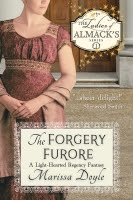Imagine this: prices are skyrocketing, in part because of
import/export laws. People are finding it hard to afford bread. The country is
deep in debt. What do you as a member of government do?
Have everyone bring in their coins and give them new ones.
Really, that’s what happened in 1816 and 1817 in England. The
so-called Corn Laws were keeping the cost of grain artificially high and
preventing other countries from bringing in grain at lesser prices. Things were
looking wobbly economically. Parliament in its wisdom decided the best way to
stabilize the economy was to standardize the coinage, and to do that they
needed new coins.
 The Coin Act of 1816 ordered the Royal Mint to put forth new
silver coins to replace the old ones. Master of the Mint, William
Wellesley-Pole, older brother of the Duke of Wellington, came up with a daring
plan. (He added the Pole part of his name as a requirement to receive his
inheritance from a distant relative). He had to create new coins, get everyone
in the entire country to trade out their old ones, and bring the old ones back
for destruction.
The Coin Act of 1816 ordered the Royal Mint to put forth new
silver coins to replace the old ones. Master of the Mint, William
Wellesley-Pole, older brother of the Duke of Wellington, came up with a daring
plan. (He added the Pole part of his name as a requirement to receive his
inheritance from a distant relative). He had to create new coins, get everyone
in the entire country to trade out their old ones, and bring the old ones back
for destruction.
Not easy by any imagining. Right away, he ran into trouble.
To begin with, the Royal Mint had no record of the coins it had previously
cast, so he had no examples on which to build. Joseph Banks, head of the Royal
Society, gave him some old coins, and Wellesley-Pole started the Royal Mint
Museum, which is still in operation today.
For another, the old coinage had been cast in such a way
that the designs and denominations were rubbed off over time, until no one was
sure what was worth what (one of the reasons Parliament wanted to have new
money minted). Wellesley-Pole used the latest engraving and printing processes.
Then there was the fact that Parliament wanted him to keep
this whole endeavor strictly secret until it was time to redistribute the
coins. (You can imagine how robbers eyes would gleam if it were known new coins
were being transported around the country.)
Finally, there was the matter of the Prince Regent. He had
to approve the design of each type of coin. To ensure success, Wellesley-Pole contracted
with the great Italian engraver, Benedetto Pistrucci to design the faces of the
coins. And they were literally faces—then as now, English coins carried a bust
of the reigning monarch. Normally, Pistrucci would have had his subject sit for
him to create the bust, but King George wasn’t in any shape to comply. (He was
quite mad at this point.) So, Pistrucci set up the coin based on other
portraits. Shall we say, they were not his finest work? His initial design has
been dubbed the “bull head George” (the coin at the top of the post). I’m sure you can see why. It was roundly
criticized, and another design prevailed. This St. George and the Dragon was used then and in 1915, as shown on the coin.
Wellesley-Pole also prevailed. He managed to have cast new silver
coins and a new gold coin, the sovereign, which was worth 20 shillings as
opposed to the new defunct guinea, which was worth 21 shillings. He also had
cast crowns and half crowns. All coins were cast to specific standards, bagged
and crated, and distributed by 1,000 agents through banks all over Britain.
The effort at last met with high success. Approximately 57
million coins were exchanged, with no robberies and no riots, over the course
of two weeks. And the coins remained in circulation until 1971.
Well done, Wellesley-Pole, well done. I’m happy to recount
your triumph.







2 comments:
Georgette Heyer and others did tell of robberies. Her book was the Toll Booth. That is where I first heard of the new issue. Guineas were retired in favor of the sovereign but the guineas stayed in circulation and higher end commodities were still priced in guineas long afterwards. Didn't know Wellesley -Pole had so much to do with it. He received a peerage later-- was it for this endeavor? His son was a spoiled brat, wastrel.
As far as I saw in my admittedly limited research on the subject, the robberies are all fictional. I noticed that he received a peerage during his time as Master of the Mint, but I didn't see anything that definitively linked the two.
Check out https://core.ac.uk/download/pdf/43747.pdf, which contains a Ph.D thesis on the subject. Fascinating.
Post a Comment